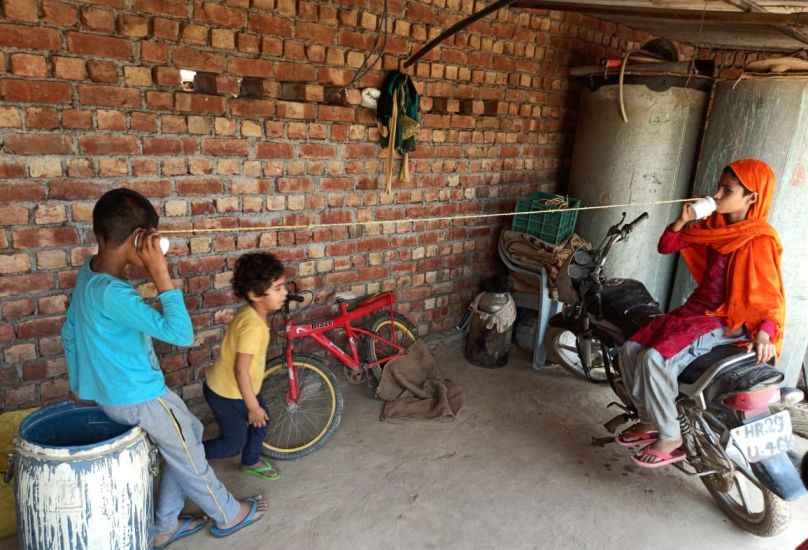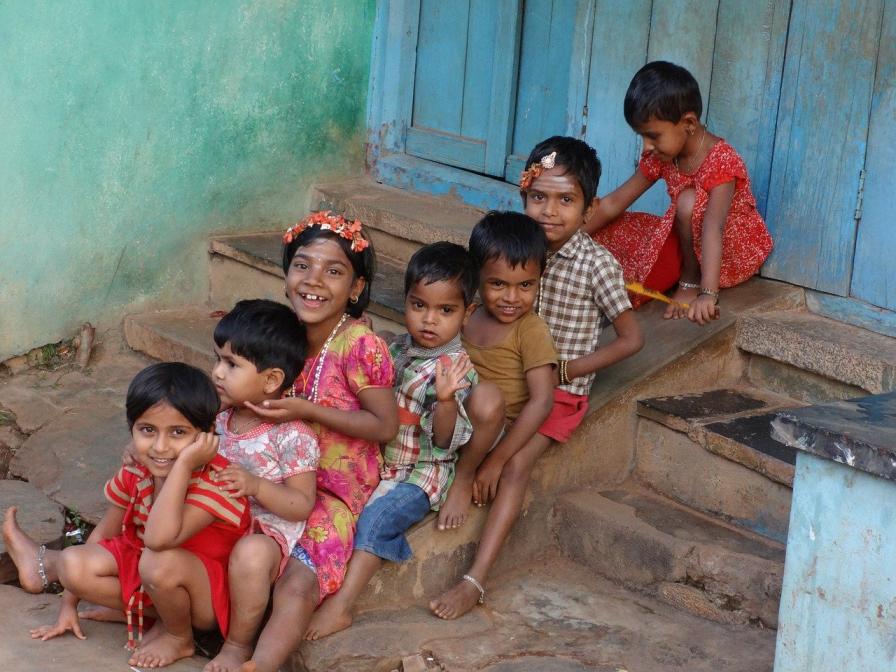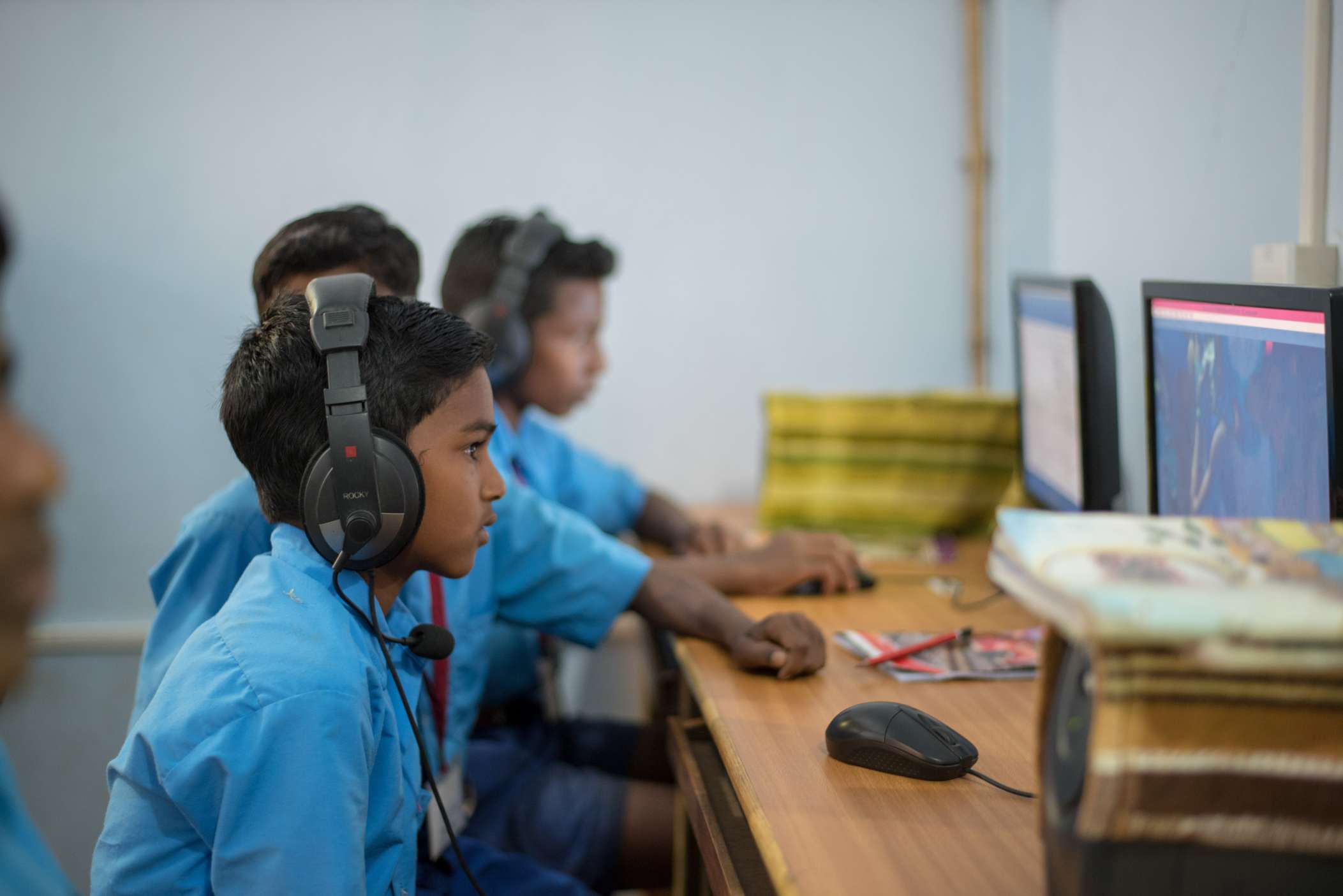The consequences of the COVID-19 pandemic have been severe and continue to be so. In the midst of it, we need to remember that children and youth are not immune to the tensions around them. Confined to their homes, they are observing both, the situation unfold, as well as their parents and family members grapple with stressors. This can bring with it impatience, discomfort, and stress. In this situation, a positive learning environment and access to engaging activities can greatly help in reducing anxiety and stress.
Given that schools are closed and children and teachers are confined to their homes, the government has been pinning its hopes on technology-based, remote learning. Subsequently, EdTech companies have been offering their products based on high production value, interactive nature, and adaptivity.
However, this knee-jerk reaction has failed to take into account nuances around access, relevance, and community learning.

On one hand, the pandemic, like any other crisis, has highlighted the economic inequalities that exist in India. For example, according to the 2019 TRAI data, rural teledensity stands at 57.59 per 100 inhabitants, in contrast to the urban teledensity, which stands at 160.63. What’s more, wireless internet teledensity in rural India stands at 57.28, as opposed to 156.18 in urban areas.

We need all stakeholders in the education sector to be cognisant of this ground reality, so that they can adapt their products and programmes accordingly. This pandemic is going to have a lasting impact, especially for communities that are already marginalised. It is therefore imperative that we create solutions that are able to reach the last mile.
On the other, we need to ensure that instead of force-fitting learning into a high-stress period of a child’s life, we make content that is easy to navigate and sparks creativity. Not only could this help reduce anxiety and stress, but it will also help create a learning environment for children.
Making EdTech more accessible
Here are some strategies we can follow to ensure that our EdTech programmes are made accessible to and engaging for everyone who needs them:
Access to technology is still a questionable reality in most states of India today. The rural teledensity and wireless teledensity figures indicate the economic disparity between rural and urban communities. This disparity is further skewed with a clear gender bias—fewer females have access to phones or internet than their male counterparts.

In such situations, the role of EdTech can be as much to promote ‘outdated’ technologies as it is to create more sophisticated and innovative ones. There are already examples of state governments curating initiatives so that they can reach as many learners as possible. For example, the Delhi government under its ‘Mission Buniyad’ initiative is using Interactive Voice Recording—so that parents, siblings, or students can give a missed call to get an audio lesson every alternate day—to the 8,00,000 children enrolled in classes 3-8 across government schools.
The penetration of technologies such as SMS, audio calls, or even radio is far higher than smartphones, tablets, computers, and internet connections. In the 1990s, India developed effective broadcast education programmes, but we moved past them after Sarva Shiksha Abhiyan promised universal access to schools. Today, the time is right to revive and reinvigorate those programmes to ensure every child’s right to education.

We need to ensure that instead of force-fitting learning into a high-stress period of a child’s life, we make content that is easy to navigate and sparks creativity. | Picture courtesy: Pratham Education Foundation
Digital content creators and curators need to be mindful that content that is being disseminated for young children is first reaching parents. They are the customers, and it’s up to them to deliver the resources to the consumers—ie, their children.
Keeping the content simple, in regional languages, and catered to their context is crucial.
Many rural and low-income students are first-generation learners and ensuring that their parents can facilitate instructional courses at home might not be possible. Keeping the content simple, in regional languages, and catered to their context is crucial. They should not feel intimated by the content and should feel welcomed by the approach.
For example, the Himachal Pradesh government’s initiative ‘Har Ghar Pathshala’ to share pre-primary content with anganwadi workers and supervisors is a step in this direction. Every day, video capsules are sent through a common medium such as WhatsApp, highlighting activities that parents can do with their children. Counting rotis, classifying vegetables, sequencing steel glasses, or reciting folklore, are educational for toddlers, whilst also being easy to carry out.

It can be harder to stay engaged in learning, outside of the traditional classroom, and so content needs to be familiar and relatable to students in order to generate engagement.
The visuals, sounds, and syntax used are all stimuli that are vital to keep children comfortable and engaged. If children see a village and an environment like their own, and a protagonist similar to themselves, they will be able to connect to the lesson easily.
Using this understanding, we at Pratham Education Foundation created a series of 70 videos that showcased children from villages in Rajasthan, Uttar Pradesh, and Maharashtra having simple conversations with each other in English. These were scripted to include things such as self-introductions, likes and dislikes, interviews with family members, and so on. The children acting out these conversations could also be seen. When other children were exposed to these videos, they start imitating them—thereby picking up vocabulary and conversational skills.
EdTech initiatives are focusing on reaching the last mile learner and are tracking that reach. And while reach is important, it does not guarantee learning (just as delivering textbooks to students does not guarantee that they will understand what is in them).
Just delivering content will not suffice, its digestion and comprehension depends upon a resilient two-way communication channel.
There is a need for human-centered feedback and follow-up. Checking the delivery of the content, getting user feedback on it, understanding whether children can navigate the product, and mitigating any challenges that they are facing, are key to ensuring that this model works well.
Follow-up calls from teachers or facilitators can also make technology-enabled learning a more personalised experience. Having a human voice follow up could facilitate the behavioral change that is needed to support any technology adoption. Just delivering content will not suffice, its digestion and comprehension depends upon a resilient two-way communication channel.
One technology medium or delivery model might not suit everyone. Being creative and using multiple lines of communication or a transmedia approach might be helpful too, especially for younger learners. A broadcast mechanism for the inflow of content and a personalised mechanism for feedback can make the learning experience unique and hybrid.
For example, ‘Shaale – Baharchi – Shaala’ an initiative by the Maharashtra government’s Nagpur division has taken this transmedia route to learning. A topic is first introduced and broadcasted through a radio Aakashwani programme for students and parents to listen in. Follow up SMS/WhatsApp messages linked to the session are then sent to registered parents’ phones. It gives the parents and children the space to explore and embrace learning in whatever way they choose to.
Who are we building for?
The conventional education system—schools, textbooks, classrooms—has changed. We’ve moved from in-person learning to remote learning but also shifted from school to home, class to family, and teacher to parent.
And as education and technology professionals collaborate to support engagement and learning, we need to ensure that we innovate for both, the products we make and who have access to them. At this time, more than ever, it is imperative that the system focus on ensuring opportunities for every child to learn well—in their community, in their language, tailored to their context.
—
Know more
- Read about how the lockdown has exposed India’s digital divide.
- Explore Pratham’s open learning resources in 12 different languages.
- Go through the government’s recent announcements with regard to EdTech.
Do more
- Learn about how you can virtually volunteer with Pratham Education Foundation.





